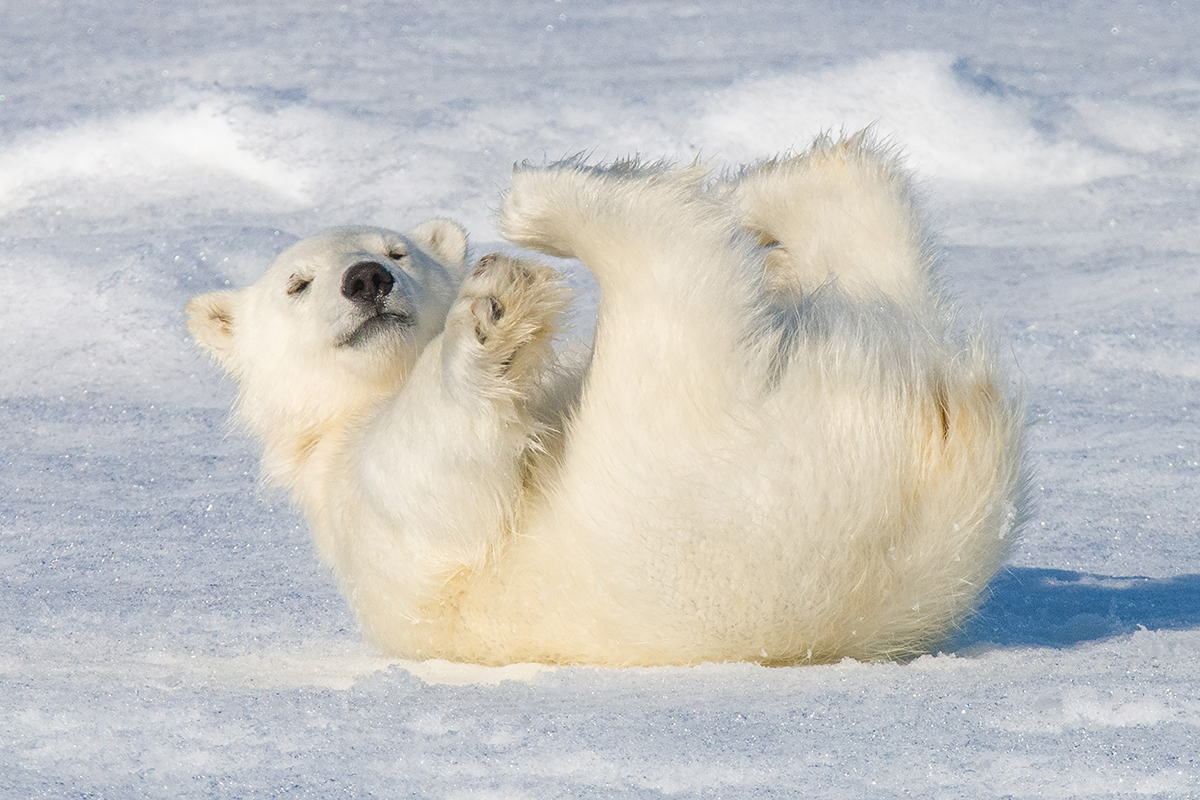Arctic Chronicles
Wayne Lynch tells the story of diverse wildlife in the polar region with his Tamron 150-600mm VC and 18-400mm VC ultra-telephoto lenses.
Share the article:
More Photo Tips | Video Gallery | Photo Gallery | Enewsletter sign-up
By Jenn Gidman
Images by Wayne Lynch
In 1978, Wayne Lynch took a sabbatical from his job as an emergency physician and spent the summer aboard the Lindblad Explorer as the ship’s doctor. “It went to all the places in the world that I’d dreamed of visiting,” he says. Inspired by his adventures in polar photography, he informed his employers at the University of Ottawa’s medical school that he wanted to take two years off to take pictures and write. He never returned to medicine, and neither did his wife, a pediatric nurse who similarly set out on a new career path as a science writer and wildlife photographer.
More than four decades later, Wayne has been to every continent multiple times and has 70 books under his belt, not to mention thousands of photos, and polar photography, from even the most remote corners of the planet. Recently, he made a 16-day return trip to the Svalbard archipelago, nestled between Norway and the North Pole, to photograph resident polar bears, birds, walruses, and other creatures that inhabit some of the world’s iciest reaches.
On his trip, Wayne relied on his Tamron SP 150-600mm VC USD (the most recent G2 version can be seen here) and 18-400mm Di II VC HLD ultra-telephoto lenses. “I’ve also used these lenses in Alberta in the wintertime, and I can attest they hold up superbly in cold weather,” he says. “The resolution on both lenses is incredible, and the versatility they have in terms of focal length is critical, especially when I’m stuck in a Zodiac and need the flexibility to zoom in and out. You also don’t want to be changing lenses on the water, due to all the sea spray. The 18-400 has become my go-to lens—I’m able to drape it around my neck and safely drive the Zodiac, but it’s ready for me to just snap it up and start taking pictures in an instant. The 150-600mm, meanwhile, is perfect for when I need more reach.”
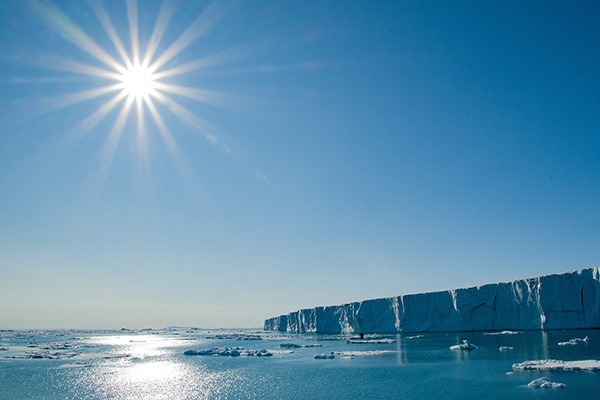
18-400mm (18mm), F22, 1/1250 sec., ISO 1800
Click image to view larger
WAYNE’S QUICK WILDLIFE PHOTOGRAPHY TIPS
Capture what others don’t.
That will require patience and a willingness to spend long periods of time hunkered down. During the early days of COVID, when we were social-distancing and isolating, I was lucky to find three lakes with lots of loons. I spent hundreds of hours behind blinds, which provided me with the opportunity to witness the birds behaving as naturally as possible, meaning I captured images that many others haven’t.
Read up on when and where to photograph.
Every species is different. For example, I led tours to Churchill, Manitoba, for nearly two decades and know you won’t find bears doing a lot of hunting and other activity in October or November. They’re lying around and conserving energy, waiting for the ice to come. Or take musk oxen. If you’re interested in specifically photographing them during rutting, or mating, season, when they ram their heads together in competition, you want to go in late August or early September.
Tell a story.
Sometimes you’ll want a static photo, like the one here of the ivory gull, which is an endangered species. But generally, I want to capture movement and behavior and show the animals in action, or interacting. That could mean a walrus scratching its back, a cub rolling on the ice and playing with its feet, or a mama bear nuzzling with her babies. Modern technology allows us to freeze the action with faster shutter speeds, and with polar photography, capturing such moments can be truly exhilarating.
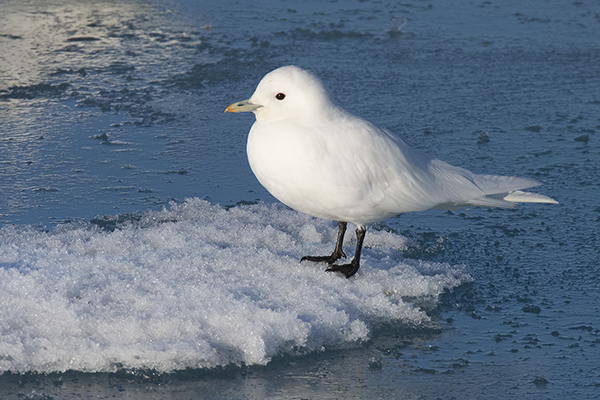
150-600mm (600mm), F9, 1/3200 sec., ISO 800
Click image to view larger
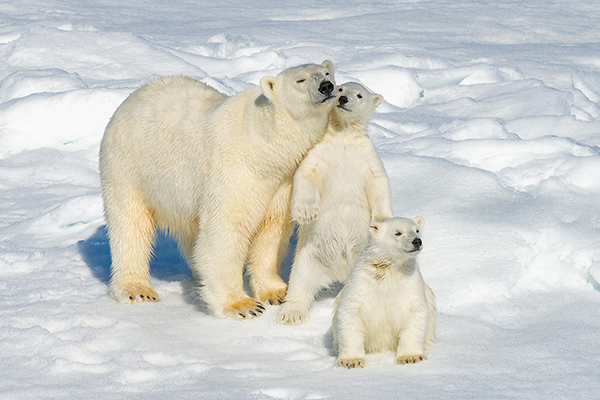
150-600mm (320mm), F11, 1/3200 sec., ISO 640
Click image to view larger
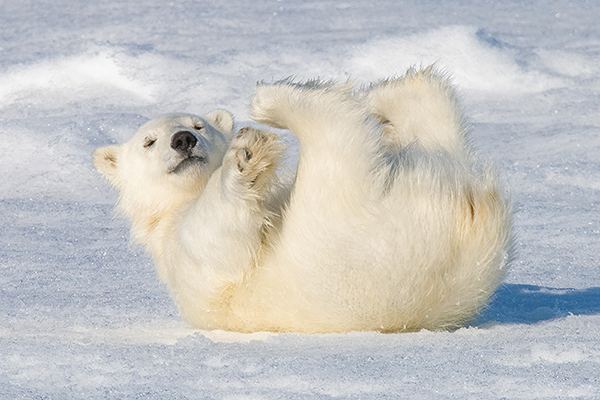
150-600mm (550mm), F9, 1/2500 sec., ISO 450
Click image to view larger
Protect the highlights.
Proper exposure is key in the Arctic. Saving your highlights is preferable to blowing out your image. You can always pull out details in the shadows in post-processing. The histogram is your friend in these situations.
For instance, for a darker-colored animal like a walrus against a white, snowy landscape, that’s a contrast nightmare. I exposed for the lighter background, then brightened up the walrus while editing. In the ivory gull photo, what the camera is concentrating on is that beautiful dark blue water behind it. Its impulse is to let in more light, which would overexpose the bird. In this case, I spot-metered and selected a similar highlight elsewhere, then took a photo and checked my histogram to see if I blew out the gull.
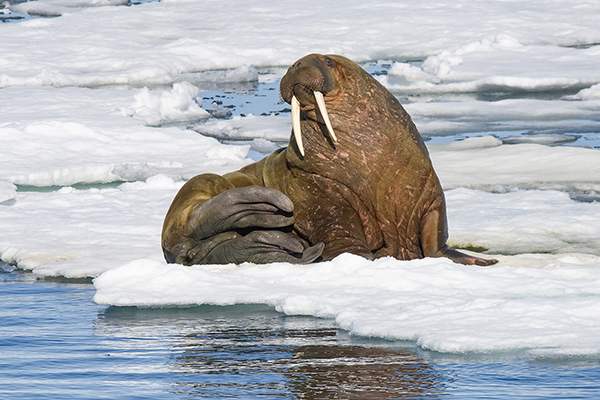
150-600mm (550mm), F9, 1/4000 sec., ISO 1100
Click image to view larger
Respect the animals’ space.
Don’t modify their behavior. If I disturb the animals, I’ve failed. It’s better to miss the shot than to endanger my subjects. It can also be a safety issue, as some animals may feel threatened. One time, a walrus calf wandered away from its mother to approach us in our Zodiac. The mother ended up charging the vessel, banging the motor twice with her tusks. Luckily, she didn’t puncture the pontoon.
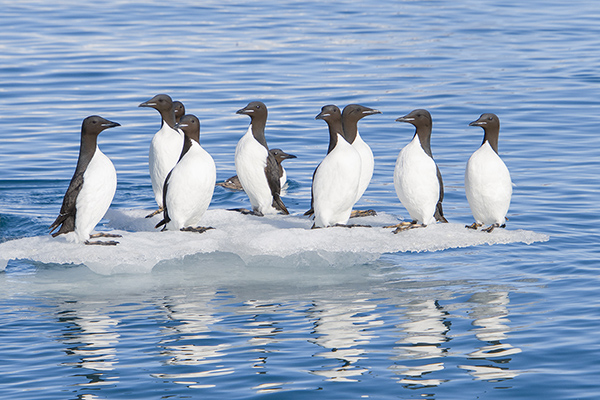
18-400mm (145mm), F9, 1/1600 sec., ISO 400
Click image to view larger
To learn more about Wayne Lynch’s wildlife photography tips and his best work, check out his website.
Is your Tamron News subscription up to date? Click to subscribe to all editions of Tamron News featuring how-to tips, new product news, contest announcements and inspiration!
More Photo Tips | Watch Videos | Learn More About Tamron Lenses | Photo Gallery
